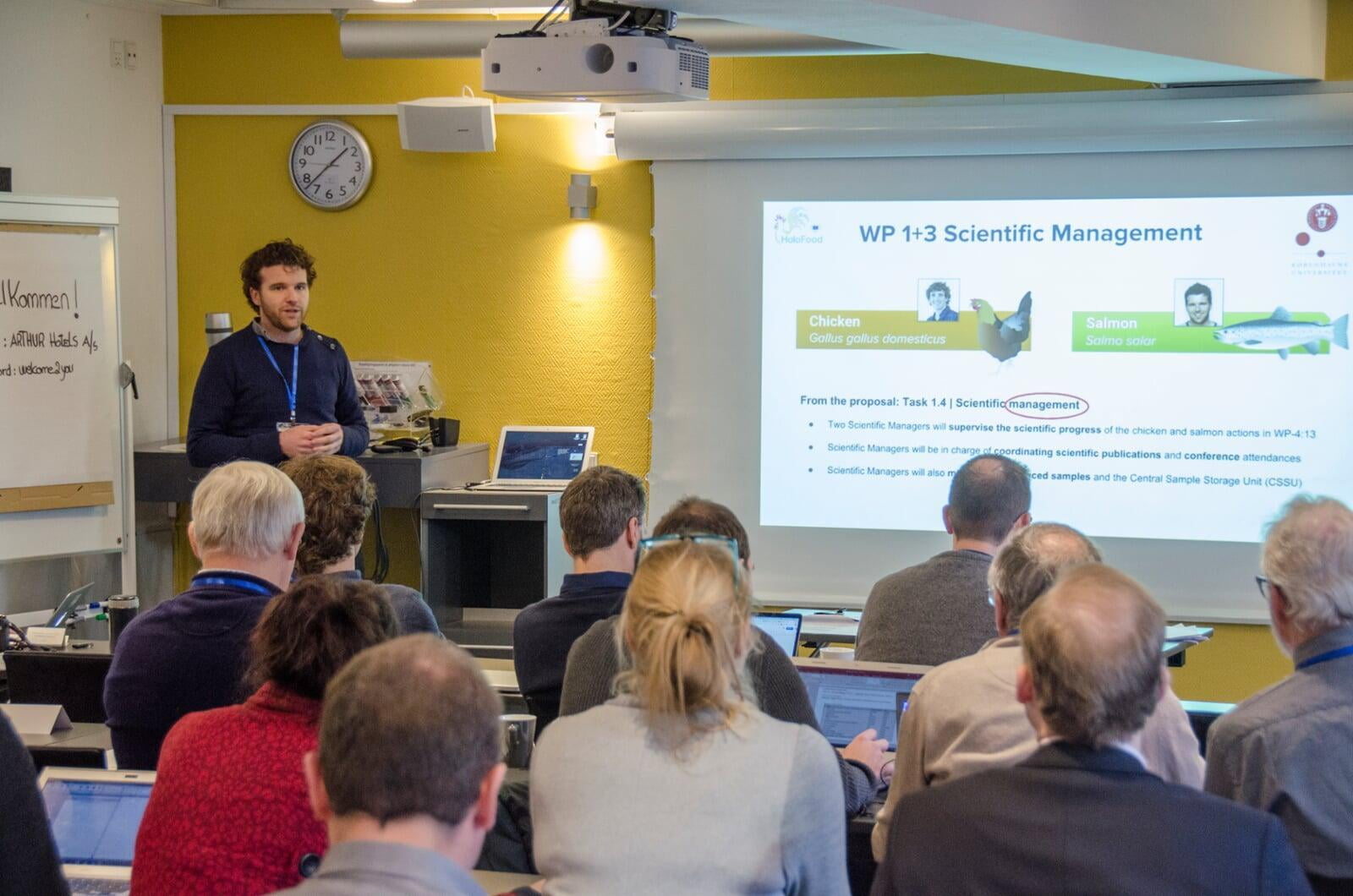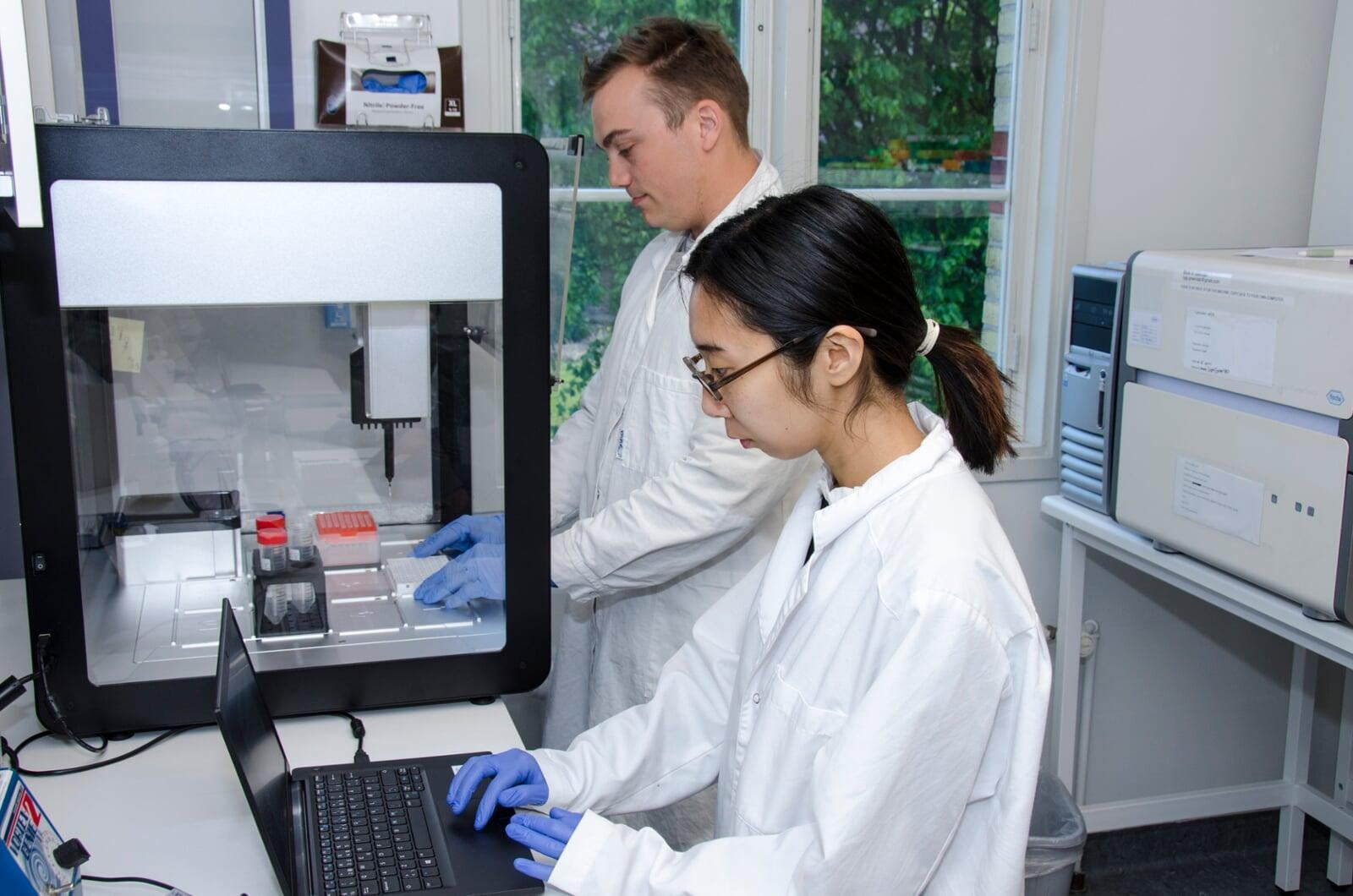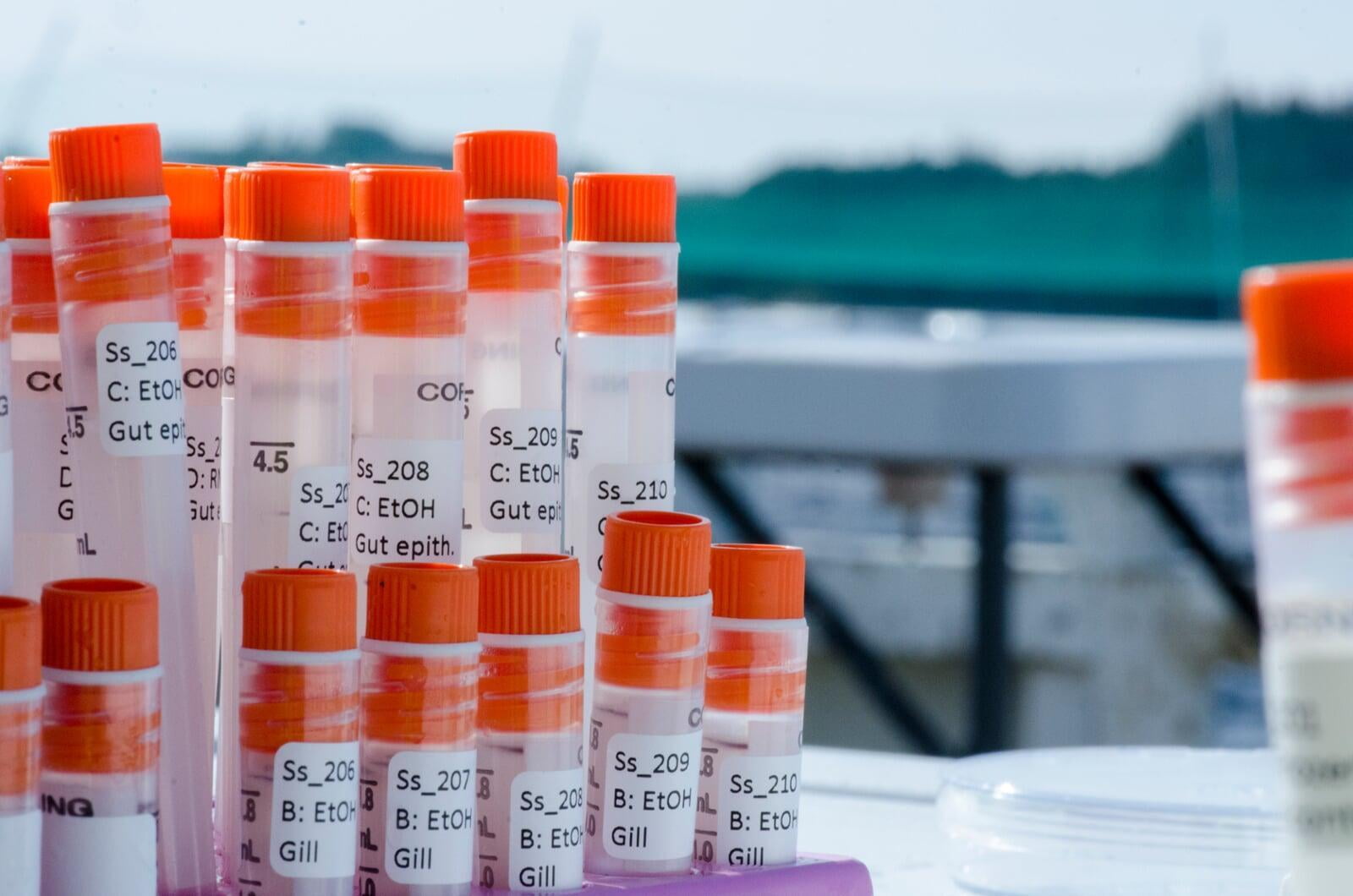HoloFood Impacts

Increased awareness of the potential of microbiomes

Improvement of overall knowledge on microbiomes

Development of a cost-effective solution in food production

HoloFood was a Horizon2020 Innovation Action, comprising of 11 organisations from across Europe. It was active from the 1st of January 2019 until the 30th of April 2023.
HoloFood was a 'hologenomic' approach that helped to improve the efficiency of food production systems by understanding the biomolecular and physiological processes affected by incorporating feed additives and novel sustainable feeds in farmed animals.
The HoloFood consortium showcased the potential of an innovative solution that held enormous potential for optimising modern food production. Specifically, HoloFood was a framework that integrated a suite of current analytical and technological developments, that was applicable to any major animal food production system, spanning the full production line.
Thus it was as relevant for farmers producing livestock, as it was to the associate industries such as those producing the feed and feed additives upon which the animal’s growth, quality, health, and wellbeing depends.
With the planet’s population rapidly increasing, one of the key global challenges of this century is to secure that the growing food production is performed in a sustainable fashion and with a low-carbon signature. Optimising food production is thus not only of commercial interest for companies, but also of critical importance for humanity.
It is well known that gut microorganisms play a pivotal role in the health and growth of animals, and a balanced gut microbiota is essential for an optimal food production. In the last decades, and in particular since the 2006 ban of using antibiotics to promote animal growth in the European Union, different strategies are being developed to modulate gut microbiomes aiming to improve food production, such as functional feed components or feed additives.
Feed additives have been proven effective at modulating microbiomes in many animal systems, although their efficiency often exhibits large variation. The likely reason underlying such inconsistency, is the very limited knowledge we have about the specific means of action of the additives. Understanding the effect of these additives is poorly understood, because the microorganisms of interest might interact with hundreds of other microbial taxa as well as the host organism. Consequently, the procedures to improve the feed additive products are not as efficient as they could be, and it is unlikely that any truly optimal product can be found without drastically modifying the approach taken.
HoloFood’s overall objective was to implement a timely technological solution based on cutting-edge biomolecular research in the food industry, which aimed to:
1. Optimise animal food production systems by improving different stages of the production line.
2. Showcase the benefits of understanding the feed-microbiome-animal interactions through the application of state-of-the-art scientific methods to the food production sector and the general public.
...of microbiome modulation approaches to improve food production systems, disseminate key results and train relevant users.
... to increase efficiency and versatility to ensure applicability on a wider range of production environments and food production chain steps.
... that relate to feeds and feed additives with production parameters of interest.
... containing feed-host associated microbiota biomolecular information linked to production parameters of interest.
...to optimise feeding and feed additive administration strategies, decreasing our reliance on unsustainable food production practices.
... validation through piloting under commercial production scale environments in poultry and aquaculture.
The knowledge generated was used to optimise the feed additive strategies implemented in food production, by tailoring them to the genetic background and developmental stage of the animals, as well as production environment.
In doing so we improved the quantity, quality, and safety of the produced food, as well as increased the sustainability of food production and animal welfare.
The ambition of the HoloFood solution was it to create a versatile framework that can be applied in theory to any food production system that relies on the co-interaction of animals and their gut microorganisms.



